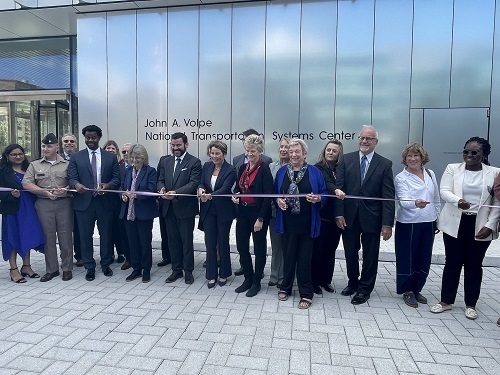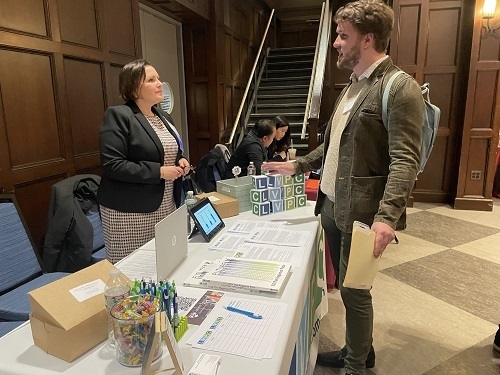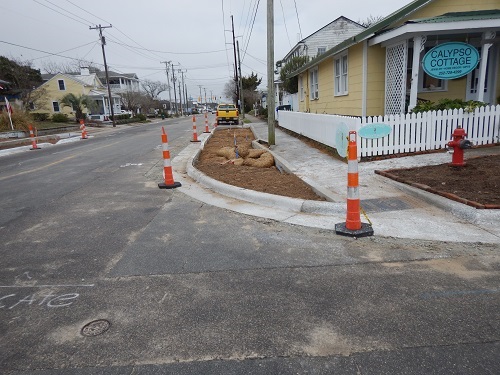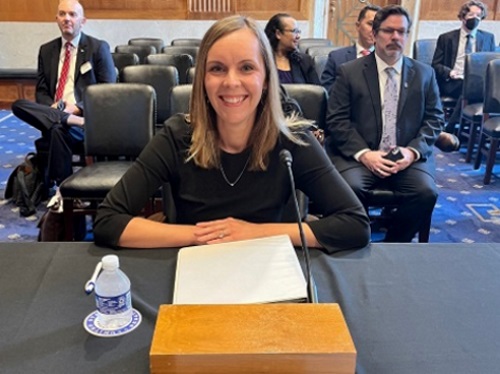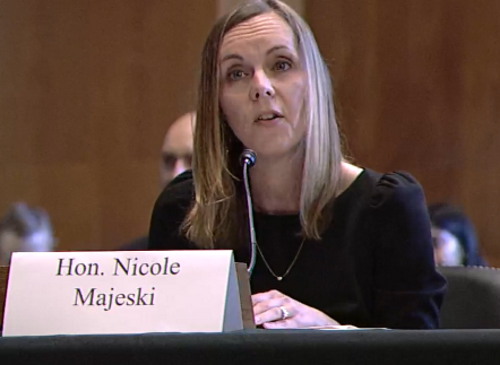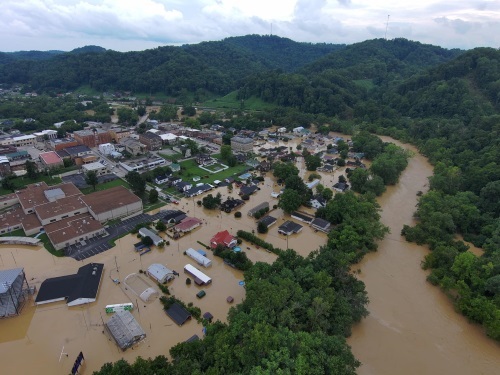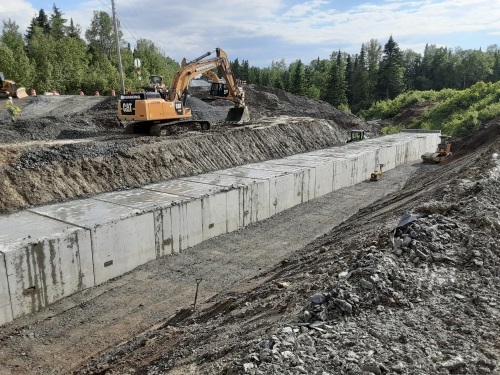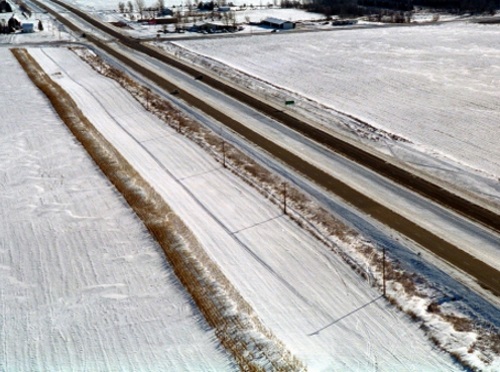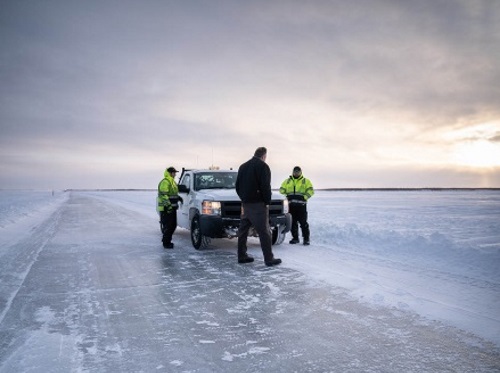Officials from the U.S. General Services Administration, the U.S. Department of Transportation, and the Massachusetts Institute of Technology – among others – recently held a ribbon-cutting ceremony to open the new USDOT John A. Volpe National Transportation Systems Center.
[Above photo by the USDOT]
The event celebrated the completion of the decade-long $750-million project to design and build a sustainable USDOT facility for experts focused on “transforming transportation for all” across the various modes of mobility.
In 2012, USDOT and GSA began conversations about redevelopment of USDOT’s 14 acres in the Kendall Square area of Cambridge, MA. In 2017, GSA entered into a first-of-its-kind Exchange Agreement with MIT to design and construct a state-of-the-art, low-emissions building as a new home for the Center on approximately four acres of a 14-acre site.
In exchange for the design and construction of the new facility, the federal government agreed to convey the portion of the property no longer needed by the federal government to MIT for mixed-use development.
“The Volpe development is a unique collaboration that benefits everyone involved,” said MIT President Sally Kornbluth in a statement. “Through their cutting-edge research and policy work, the center’s transportation experts will continue to serve the nation by grappling with crucial transport challenges – but now in a facility that reflects the quality of their far-sighted work.”
The new facility will replace the Volpe Center’s six existing buildings and surface parking lots with a highly energy efficient, climate resilient structure that will house multiple agencies. The new facility is expected to reduce emissions by over 50 percent from a typical building and achieve Leadership in Energy and Environmental Design or LEED Platinum certification.
It includes triple-paned glass, heat recovery chillers, electric vehicle charging stations, rainwater reclamation and reuse system, green and cool roof technology including a rooftop solar array, and an Advanced Building Automation System to optimize energy use, USDOT noted.
“Since its establishment in 1970, the Volpe Center has been the engine for research, innovation and deployment for U.S. DOT and beyond. The experts who come to work every day for Volpe are an integral part of the DOT family,” noted Carlos Monje Jr., USDOT under secretary of transportation policy.
“This was a unique opportunity to make smart investments in sustainability, empower the federal workforce, and ensure that federal buildings remain vital parts of the communities around them,” added GSA Administrator Robin Carnahan.
GSA noted that, although the majority of the Volpe Center’s work is sponsored by USDOT, it also lends key technical support to over a dozen other federal agencies including the Department of Defense, NASA, the Department of the Interior, and Department of Homeland Security, as well as state and local governments.

